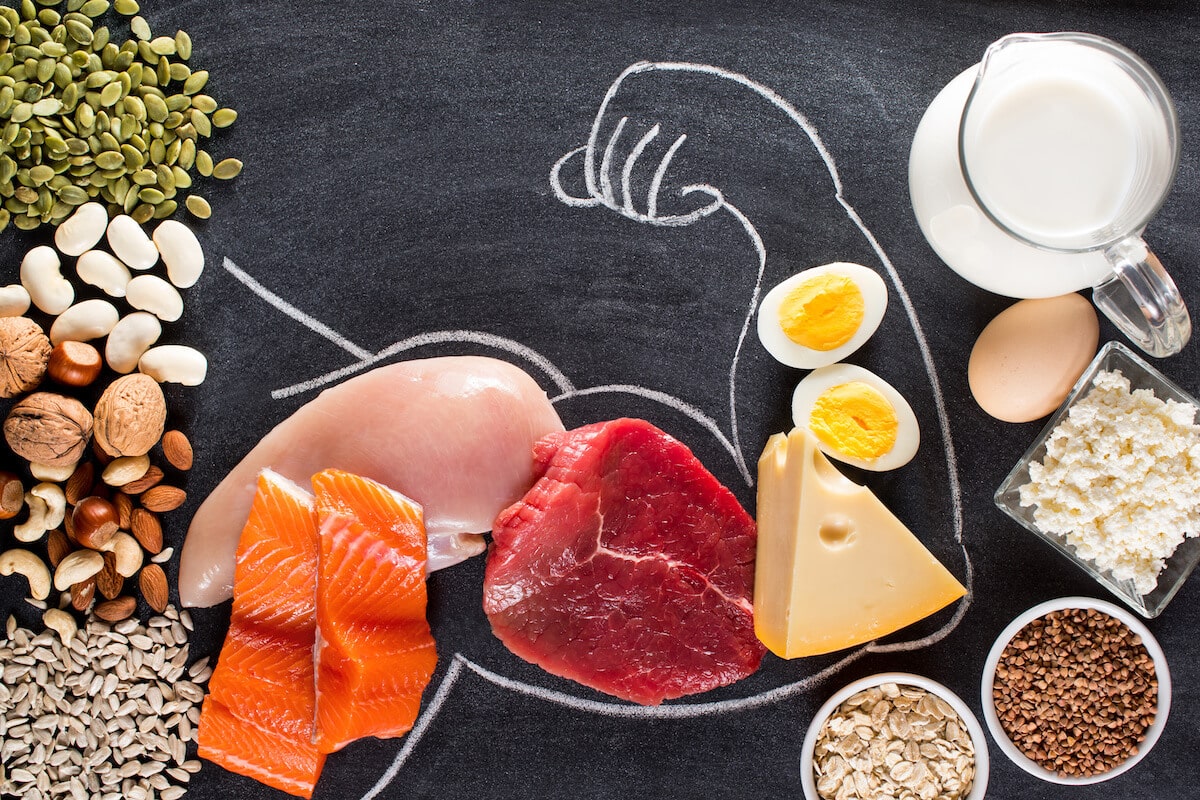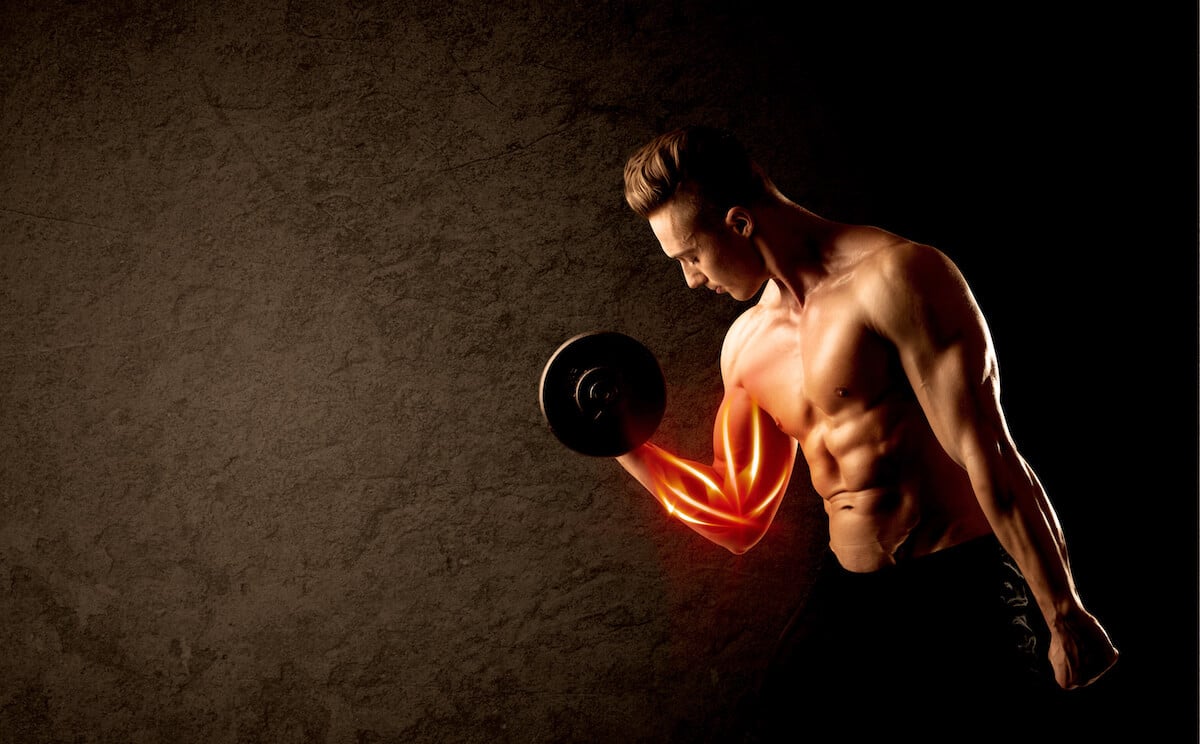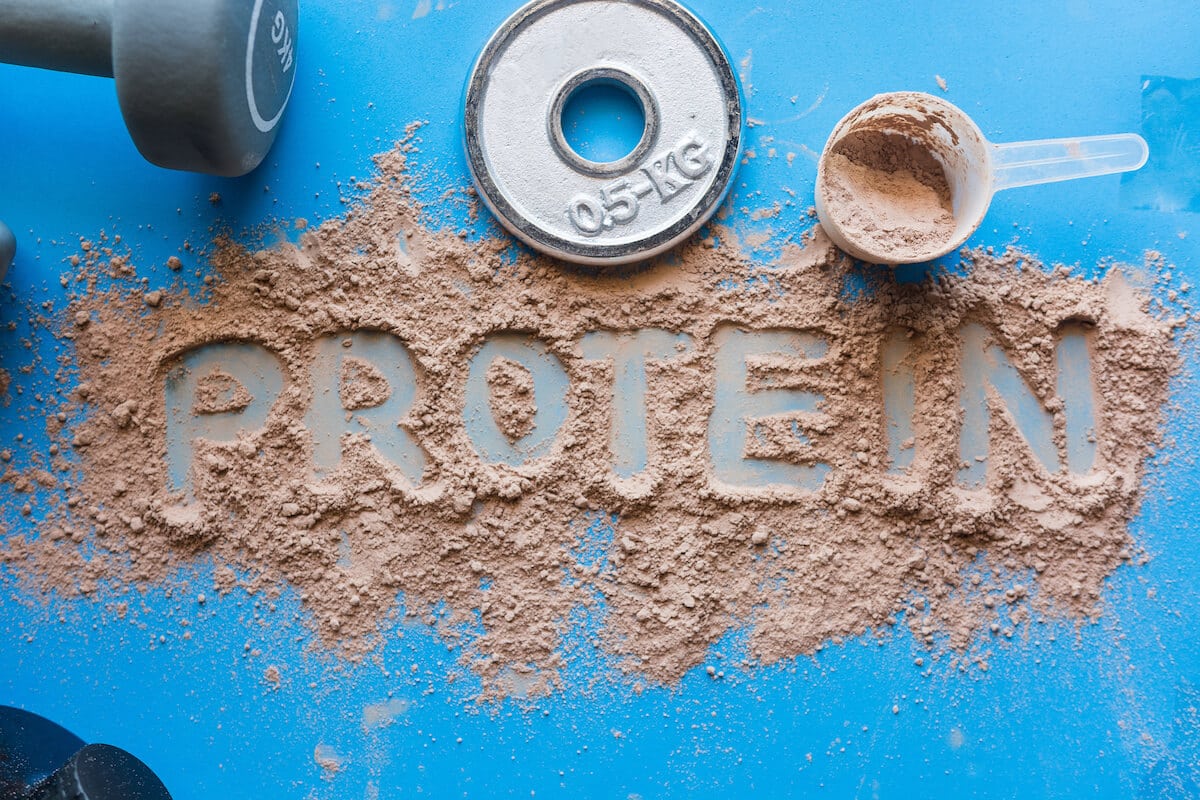
07 Feb How Much Protein to Build Muscle Do You Need? A By-the-Numbers Guide
How much protein to build muscle do you need? It depends on your weight and activity level. Despite what some sources might claim, no magic amount of protein will work for everyone. With this guide, we’ll help you determine how much protein you need to build muscle. We’ll also touch on why you need protein and how to find the best supplements for your diet.
Protein Basics
Protein is one of three essential macronutrients (macros) — protein, fat, and carbohydrates (carbs) — the human body needs for health. This nutrient is used in every cell in your body and assists with everything from hormone production to muscle growth and repair.
The building blocks of protein are known as amino acids. Of the hundreds of amino acids that exist, 20 are crucial for your body’s functions, but it can only produce 11. The other nine, known as essential amino acids, must come from your diet.
Protein foods that contain all nine essential amino acids are known as “complete proteins.” And it’s these complete proteins you should focus on when you’re adding protein to your diet to build muscle mass. The nine essential amino acids include:
- Histidine
- Isoleucine
- Leucine
- Lysine
- Methionine
- Phenylalanine
- Threonine
- Tryptophan
- Valine
When your body breaks down protein through a process known as muscle protein synthesis, it deconstructs it into individual amino acids. It can then distribute and recombine these amino acids based on your current needs.
If you’re exercising regularly and not getting enough protein (specifically complete protein), you may experience muscle loss and increased soreness following workouts. However, true protein deficiency is rare in the United States.
How Much Protein to Build Muscle Do You Need?

Finding the right amount of protein depends on your body weight and activity level. The recommended dietary allowance (RDA) for healthy adults in America is 0.8 grams of protein per kilogram of body weight (0.36 grams per pound).
This number is not a limit — it’s the minimum protein requirement for most people to prevent muscle loss. If you’re following a regular workout routine, your protein needs might be much higher. For example, those who actively engage in the following workout routines may require a high-protein diet:
- Bodybuilding
- Strength training
- Resistance training
- Weightlifting
- Calisthenics or bodyweight training (resistance exercise using your body’s weight)
- Running
- Cycling
- Swimming
- Power yoga
- High-intensity interval training (HIIT)
If you regularly engage in any moderate or intense workout, you probably need a higher protein intake than the RDA of 0.36 grams per pound of body weight.
How Much Protein to Build Muscle: Finding Your Number
The most accurate way to determine the best daily protein intake for your body and goals is to work with a dietitian, nutritionist, or sports nutrition specialist. They can consider your body composition, calorie intake, weight loss goals, and overall health to create a detailed dietary protein and nutrient intake plan.
However, some prefer to estimate an ideal daily intake and adjust as needed based on results over time. According to the American College of Sports Medicine, it’s best to increase protein intake and engage in activities like resistance training, weightlifting, running, or cycling to trigger muscle tissue growth (aka hypertrophy).
The following guidelines may help you find the right protein balance for your daily diet:
- How much protein to build muscle for moderate to high activity levels? 1.2-1.7 grams of protein per kilogram of body weight (approximately 0.5-0.8 grams per pound of body weight)
- How much protein to build muscle for intense activity levels? 1.7-2.3 grams of protein per kilogram of body weight (approximately 0.8-1.1 grams per pound of body weight)
- How much protein for older adults starting to lose muscle? 1.5 grams of protein per kilogram of body weight (approximately 0.7 grams per pound of body weight)
These guidelines cannot take fat loss goals, lean body mass, body fat percentage, daily calorie intake, age, or conditions like obesity into account. To fine-tune them, track your body composition (many gyms offer free analyses to members) and muscle growth and adjust according to your results.
You can also ask a nutritionist or your doctor to review any dietary plan you create before putting it into action. We recommend checking with your doctor before making any significant changes to your diet.
Sample Dietary Plan
Once you’ve determined your ideal protein intake, you’ll also need to calculate your other macros — carbohydrates and fats. Your diet’s total grams of protein, carbs, and fats must fit within your daily calorie intake. Protein and carbs contain four calories per gram, and fat has nine.
Suppose a 150-pound person exercising at an intense activity level might opt for 1 gram of protein per pound of body weight. This would mean 150 grams of protein per day, amounting to 600 calories from protein. If their calorie limit is 2,200, they’d have 1,600 calories left to allocate between carbohydrates and fats.
Based on bodybuilding recommendations, they might aim to get 25-30% of their calories from protein, 55-60% from carbohydrates, and 15-20% from fats. Here’s what they might do:
- Protein: 600 grams (27%)
- Carbs: 302 grams (55%)
- Fats: 44 grams (18%)
This sample dietary plan comes to 100% of the sample 2,200 daily calorie limit and meets recommendations for muscle growth with intense activity levels.
How to Get the Most From Your Protein

Once you’ve determined how much protein you need to gain muscle and have your doctor’s approval, you’re ready to move forward with your new diet plan. Within one to two months of following your diet and exercise routines, you should begin to see results. Here are some tips to help you get there.
Track Your Macros
Tracking your protein, carbs, fat, and calorie intake will help you ensure you’re hitting your targets. You can find apps and online programs (e.g., MyFitnessPal) that allow you to do this for free. Record everything you eat and drink for accurate numbers, and adjust your diet until you consistently get enough protein.
Consider Protein Timing
When you eat your protein throughout the day (aka protein timing) gets a lot of attention among bodybuilders and professional athletes. However, research suggests that timing might not matter as much as we previously thought — the body adjusts how much protein absorbs based on how much is eaten at every meal.
Still, most athletes try to space their protein evenly over three to six meals. Since protein is quite filling, this helps prevent you from becoming too full and provides your muscles with a steady supply of protein throughout the day.
Choose High-Quality Protein Foods
You’ll need high-protein foods to meet your daily requirements, but the protein content isn’t the only thing that matters — quality is also important. The easiest way to ensure you’re eating high-quality protein foods is to stick with whole foods and homemade meals instead of processed foods and takeout.
Here are some examples of foods to include in your diet:
- Fresh fruits and vegetables: Broccoli, cauliflower, carrots, sweet potatoes, tomatoes, dark leafy greens, grapefruit, bananas, apples, and other fresh produce.
- Whole grains and legumes: Brown rice, wild rice, barley, oats, whole wheat bread, black beans, chickpeas, lentils, green peas, soybeans, quinoa, and other whole grains and legumes.
- Nuts and seeds: Walnuts, cashews, sunflower seeds, pistachios, almonds, flaxseed, chia seed, and other nuts and seeds.
- Animal proteins: Lean meats like chicken breast, turkey breast, and lean cuts of pork; fish like pole-caught tuna and wild-caught salmon.
- Complete plant proteins: Soy foods like tofu, soy milk, soybeans, and tempeh; other complete plant proteins like quinoa, hemp, spirulina, and buckwheat.
Supplement Your Diet

Protein supplements can help you meet your daily protein needs more efficiently, especially if you’re often on the go. Protein powders are the most common supplements, as they mix easily with water or milk to make a convenient protein shake.
Popular options include whey protein, which is made from milk, and pea protein, which provides a plant-based alternative that’s equally effective. And if you choose high-quality pea protein that’s optimized for bioavailability (how easy it is to absorb), it can exceed the efficacy of non-optimized whey protein.
Protein supplements that use Ingredient Optimized protein offer high bioavailability and use high-quality protein sources. The Ingredient Optimized process naturally enhances protein to make it easier for your body’s digestive enzymes to break down and use — and it’s backed by science.
Here are some of the best protein supplements you can add to your diet:
- Whey protein: Performix ioWhey Protein
- Pea protein: MyProtein The ioPea
Stay Healthy and Build Muscle
If you’re exercising regularly and eating enough protein to build muscle, you’re on your way to a healthy physique. It takes time to see results, so be consistent, give it time, and always choose high-quality protein supplements and foods to give your body the building blocks it needs.
Remember to look for high-quality protein supplements that use Ingredient Optimized proteins to ensure you’re getting the most for your money and your body.


